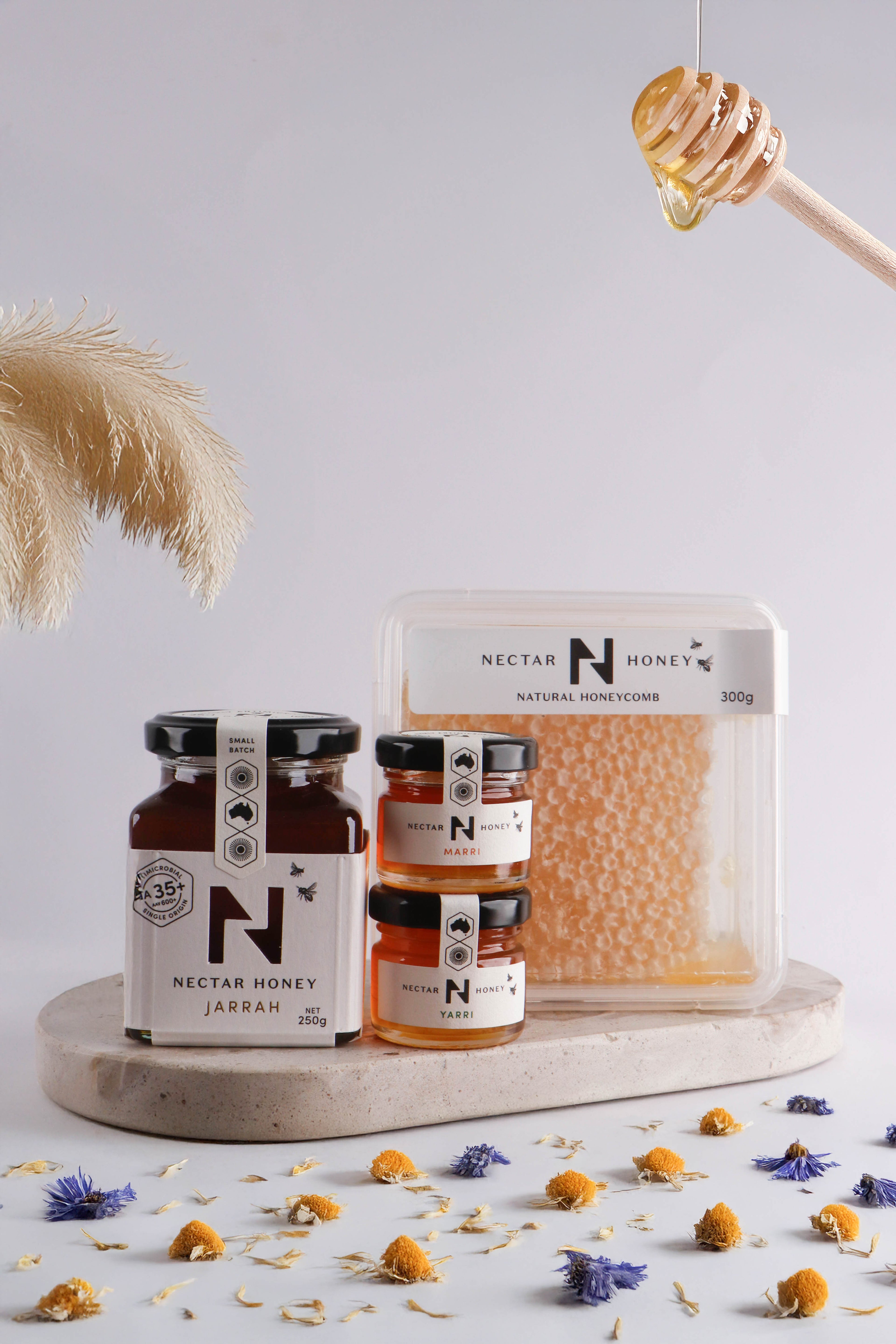Honey has pretty well always been revered as a natural medicine, but we haven't always known how it works. Modern science has unpacked this for us and has uncovered the sophisticated mechanisms that make honey one of the most effective natural antibacterial agents, employing a multi-layered natural defense system that can rival many antibacterial medicines.
The Natural Antiseptic Factory
At the heart of honey's antibacterial power lies a remarkable enzyme called glucose oxidase, introduced to the nectar by the bees during the honey-making process. This enzyme acts as nature's own antiseptic factory, continuously producing hydrogen peroxide – a compound widely recognised as a potent antimicrobial agent.
The process is elegantly simple yet impressively effective. Here's how it works: when honey gets wet (from a wound, your saliva, or even just humidity), glucose oxidase springs breaks down the natural sugars in honey and creates a steady stream of hydrogen peroxide. Unlike harsh chemical disinfectants that deliver one big hit, honey provides a gentle, continuous release of this bacteria-fighting compound.
Research shows that honey's antimicrobial activity is mainly due to this hydrogen peroxide production, and the effect gets stronger the longer honey is in contact with moisture.
Dehydration Defense
Honey's second line of defense works by depriving bacteria of water.
With sugar concentrations of 80% or higher, honey creates what scientists call "osmotic pressure." Think of it like a powerful sponge that pulls water out of anything it touches. When bacteria come into contact with honey, the high sugar concentration draws water out of their cells through a process called osmosis.
As one study explains: bacteria cannot survive this dehydration because they need water to function, grow, and reproduce. The high sugar concentration causes bacterial cells to shrink and die – it's like putting them in a cellular desert where they simply cannot survive.
The Acidic Advantage: pH as a Bacterial Barrier
Perhaps one of honey's most surprising weapons is its acidity. Despite its sweet taste, honey typically maintains a pH between 3.2 and 4.5, creating an acidic environment that most harmful bacteria simply cannot tolerate.
This acidic environment works in several ways:
- It directly inhibits bacterial growth
- It enhances the effectiveness of hydrogen peroxide
- It creates an inhospitable environment for pathogenic microorganisms
The Antioxidant Arsenal: Phenolic Compounds and Free Radical Warfare
Honey's fourth defense system involves powerful compounds called phenolic acids and flavonoids – nature's own antioxidants. These compounds work in several clever ways:
They neutralize free radicals that bacteria produce, essentially disrupting their ability to function normally.
They hinder bacterial enzymes that are essential for survival and reproduction.
They interfere with bacterial cell walls, compromising their structure and leading to cell death.
Research shows that these antioxidant compounds work together with hydrogen peroxide to create an even more powerful antibacterial effect than either could achieve alone.
The Synergistic Effect: Why the Whole is Greater Than the Sum
What makes honey truly special isn't just one of these mechanisms – it's how they all work together. Bacteria would need to simultaneously overcome hydrogen peroxide, survive extreme dehydration, tolerate acidic conditions, and resist antioxidant interference.
This is why honey has remained effective against bacteria for millions of years, while many modern antibiotics lose their power within decades. Studies show that the combination of osmotic stress makes bacteria more vulnerable to hydrogen peroxide and phenolic compounds, creating a domino effect that's nearly impossible for bacteria to escape.
The Clinical Evidence
The science isn't just theoretical. Research has demonstrated that honey's antibacterial activity varies significantly between different types, with some being up to 100 times more potent than others. This variation depends largely on the enzyme activity and the concentration of these four mechanisms.
Studies have also shown that even when honey is diluted (as happens when treating wounds), it continues producing hydrogen peroxide and maintaining its antibacterial properties.
The Bottom Line
Each mechanism – hydrogen peroxide production, osmotic dehydration, acidic inhibition, and antioxidant interference – would be impressive on its own. Together, they create nature's most elegant and effective antibacterial agent.
The next time you enjoy honey, remember that you're not just having a sweet treat. You're experiencing one of nature's most brilliant antibacterial systems, now backed by solid scientific evidence and ready to work for your health.


1 comment
hi ,does red bottlebrush honey have the same qualities as jarra honey.